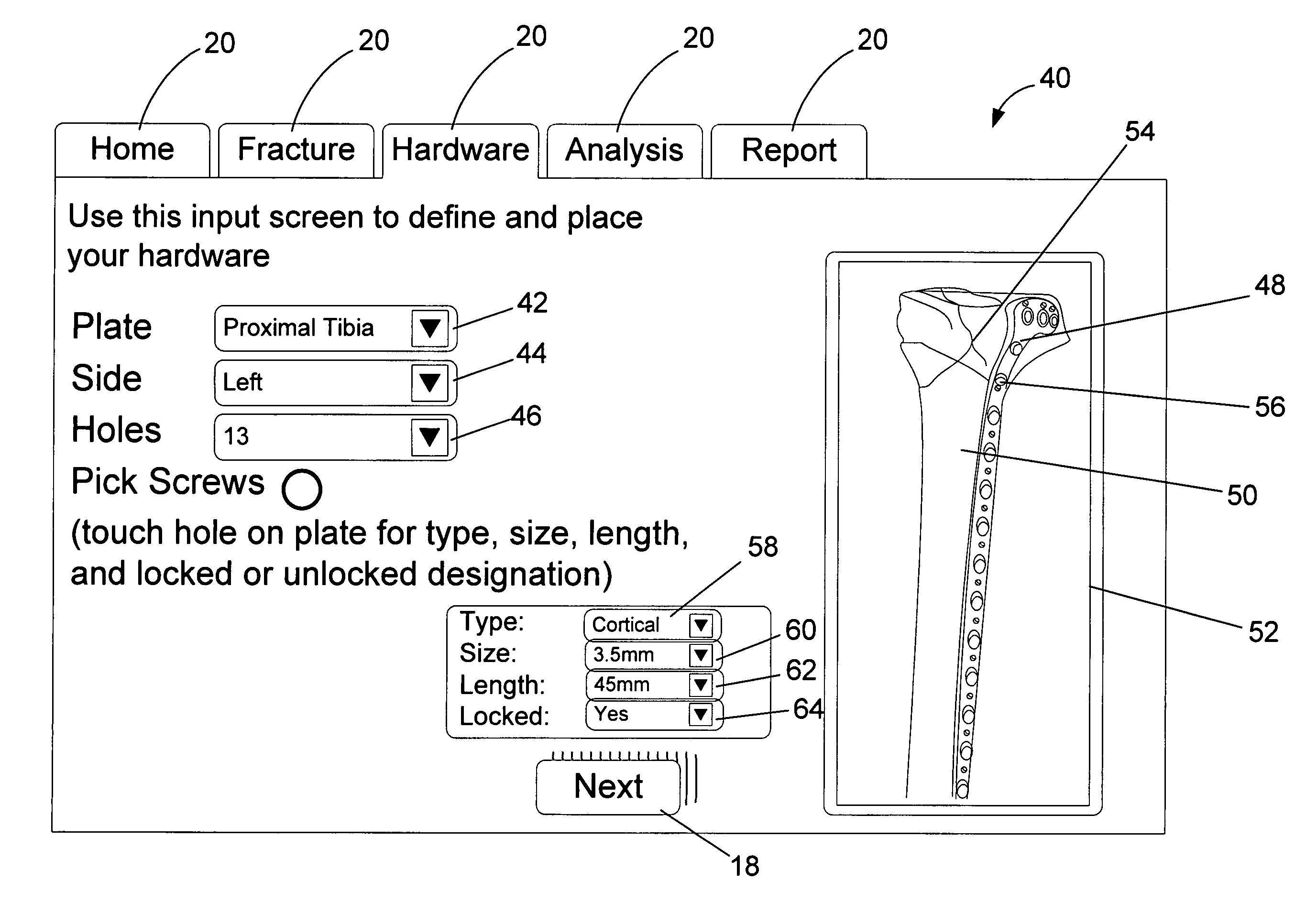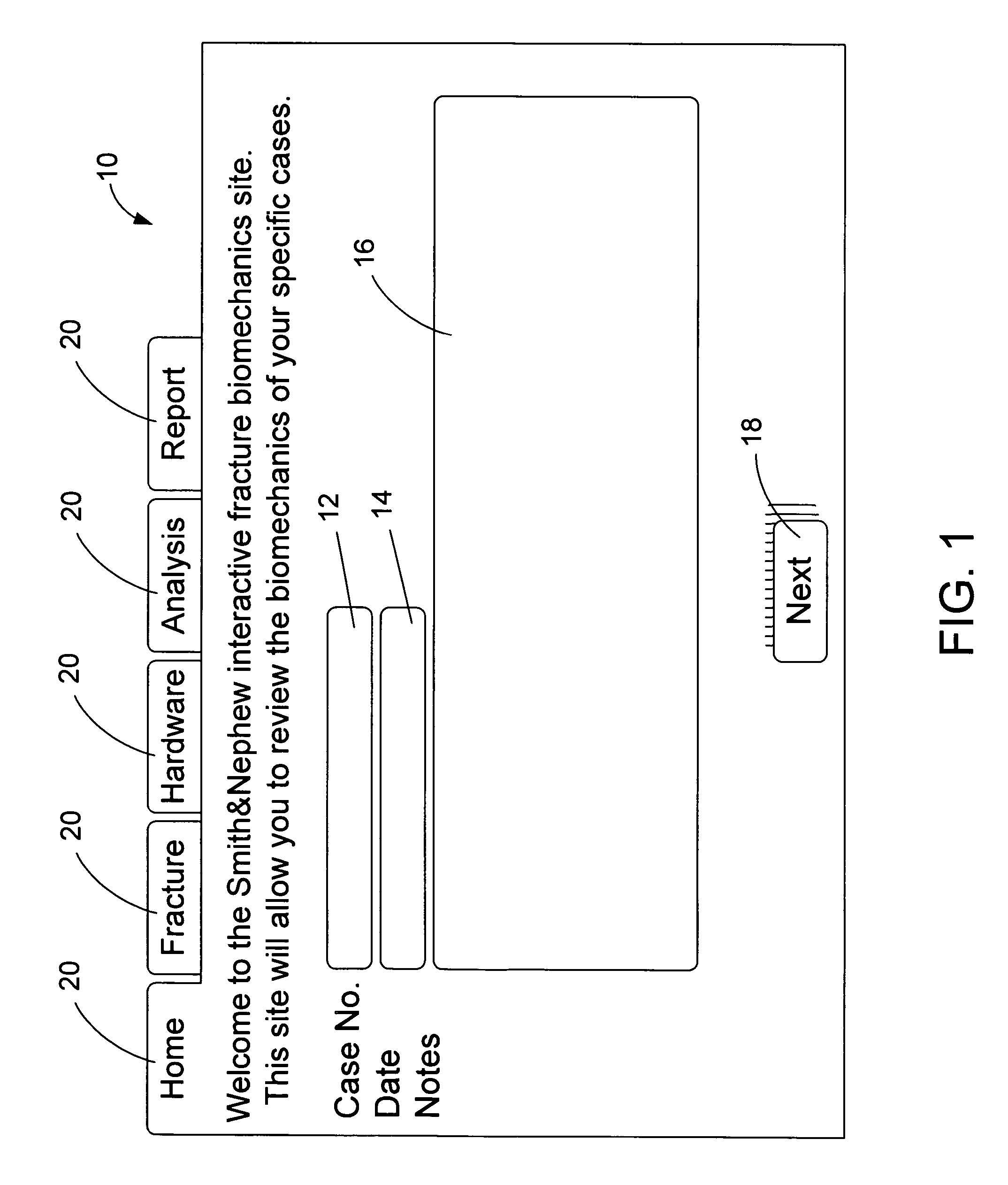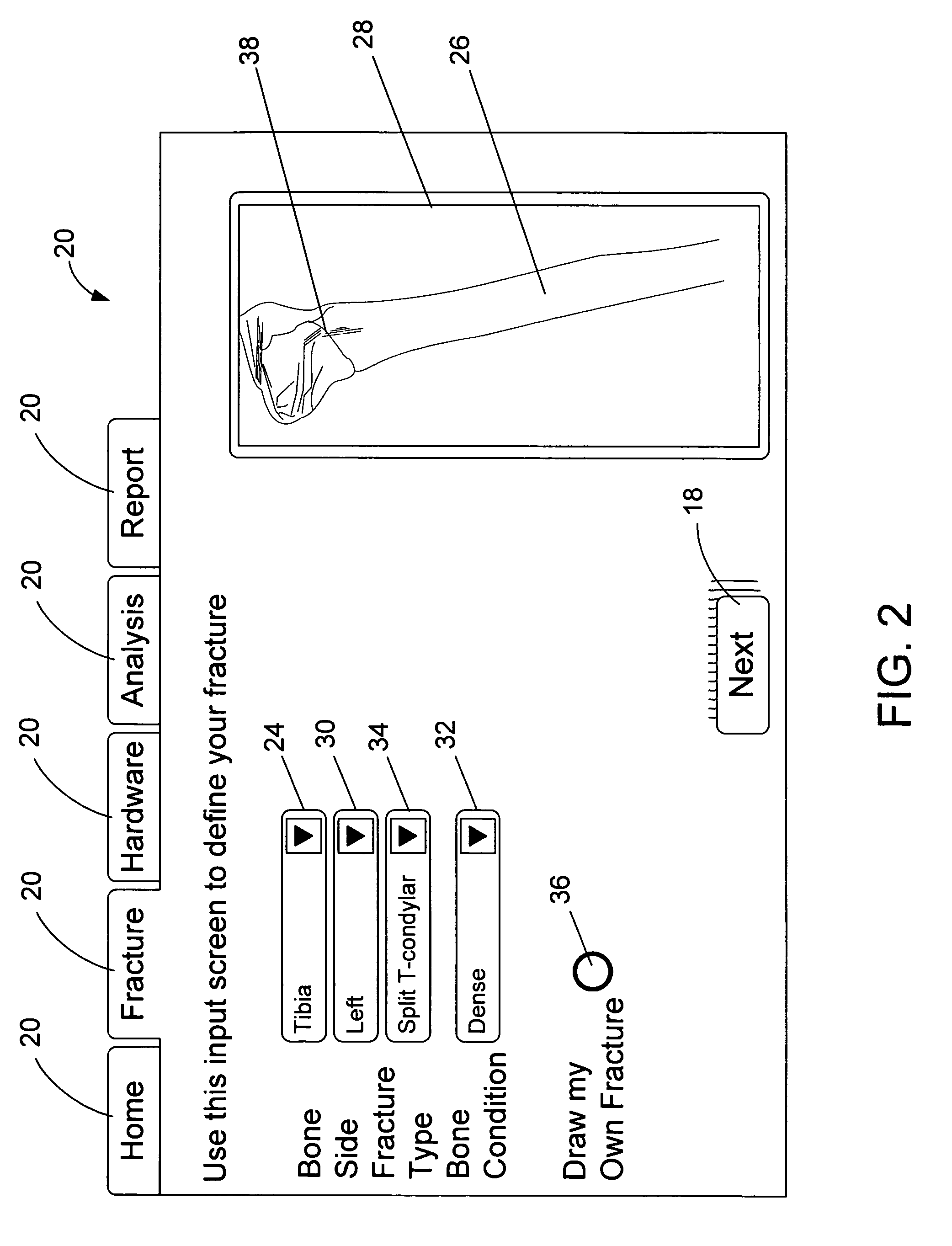Interactive orthopaedic biomechanics system
a biomechanics and orthopaedic technology, applied in the field of biomechanical and other medical studies, can solve the problems of many permutations of fractures, many challenges in dealing with fractures, plate and locked or unlocked screws, and inability to evaluate or optimize among multiple permutations, so as to reduce one or more of stress and motion
- Summary
- Abstract
- Description
- Claims
- Application Information
AI Technical Summary
Benefits of technology
Problems solved by technology
Method used
Image
Examples
Embodiment Construction
One embodiment of the present invention provides a computer or website that allows a user to load images of a fractured bone and specify a particular configuration of fixation and compression screws with a plate on the loaded bone. The computer is able to replicate normal stresses imposed on the bone by regular activities using finite element analysis. The loaded images may originate from radiographs of the actual fractured bone or may be a predefined bone structure already stored. In one embodiment, the computer is also able to predict which combination of screws will work best. This approach can be applied to any bone / device construct including nails, external fixators, and other products. Also, this system can be developed as a web based system using advanced software analysis tools or as a stand alone system that is programmed for the specific application.
In certain embodiments, the system allows a surgeon or other person to access a website and input information about a patient...
PUM
 Login to View More
Login to View More Abstract
Description
Claims
Application Information
 Login to View More
Login to View More - R&D
- Intellectual Property
- Life Sciences
- Materials
- Tech Scout
- Unparalleled Data Quality
- Higher Quality Content
- 60% Fewer Hallucinations
Browse by: Latest US Patents, China's latest patents, Technical Efficacy Thesaurus, Application Domain, Technology Topic, Popular Technical Reports.
© 2025 PatSnap. All rights reserved.Legal|Privacy policy|Modern Slavery Act Transparency Statement|Sitemap|About US| Contact US: help@patsnap.com



